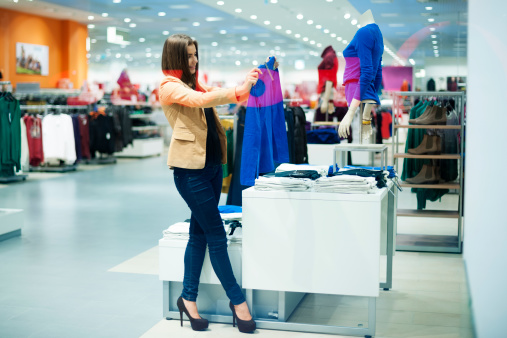By Larry Alton
Whether customers realize it or not, impulse buying represents a large percentage of the profits for many retail stores. It’s important that your business finds ways to drive impulse buying and maximize revenues. Thankfully, it just takes some creative ingenuity and a little effort. Specifically, there are three overarching ways to increase impulse buys.
Product Placement
Perhaps the biggest factor in impulse buying is product placement. Where you place the product you’re trying to sell has a major impact on your ability to increase sales. This is why grocery stores line their aisles with candy, gum, magazines, sodas, lip balm, and other similar items.
As customers wait in line and stare at these cheap products, they’re apt to toss a couple in their shopping carts, without thinking much about it. However, if these grocery stores were to keep all of these items at the back of the store, these same customers would be much less likely to pick them up in the middle of a shopping trip. It’s all about placement.
This doesn’t mean you need to immediately move your entire inventory to your checkout queues, though. You just need to begin thinking creatively about how you can better place products to encourage impulse buys. For example, you may find it valuable to reorganize aisles in a way that all complimentary products are placed next to core products – such as putting socks on an aisle of tennis shoes. The options are endless, but don’t ignore product placement.
Product Promotion
Product promotion is a key aspect of impulse buying. While an item such as a candy bar may sell itself, not every product can stand alone. The more attention you can draw to these products, the better results you’ll see. The good news is that there are a variety of options.
Physical signage is always an effective method of in-store advertising. There are plenty of selections to choose from, though. Think about the space you have to work with and what your message is. Are you trying to educate the customer prior to purchase, or simply draw attention to the product? “Often times, the promotional strategy you use will have a direct impact on the number of impulse purchases you get,” says Will Godfrey of The Godfrey Group, a provider of creative services for trade shows and retailers. “It’s worth spending some time thinking about what sort of signage you want to use.”
Product Type
Finally, you have to think about product type. As mentioned, some products are better designed for impulse buying than others. The characteristics of impulse products are cheap, sensory, and urgent.
Cheap. The average person isn’t going to randomly decide to buy an expensive product, without first giving some thought to the decision. On the other hand, your average customer isn’t going to spend much time debating a $5 purchase. It’s best to target products on the lower end of the price scale when targeting impulse buys.
- Products that excite the senses fare much better in impulse buying situations. That’s why food, candy, and drinks are favorites among retailers at checkout counters. Products that smell good – such as candles or air fresheners – are also engaging.
- There needs to be some sort of urgency for a product to be a good impulse item. Retailers often handle this by only putting out a limited number of the item.
Don’t Miss out on Impulse Sales
Some retailers sell products that are more conducive to impulse buying than others. For example, a toy store with lots of candy and cheap knickknacks at the checkout counter is going to have a lot more success than an electronics store that sells $800 televisions. However, regardless of what you’re in the business of selling, you can capitalize on impulse buys. It all comes down to product placement, promotion, and type.
Larry Alton is an independent business consultant specializing in social media trends, business, and entrepreneurship. Follow him on Twitter and LinkedIn.







